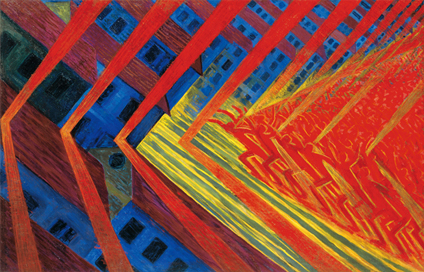This has been a vintage year for exhibitions, starting with “Rodchenko and Popova: Defining Constructivism” at Tate Modern and “Picasso and the Past” at the National Gallery. They turned out to be harbingers of what was to come, the first in a series of shows exploring pivotal figures and key movements in the transformation of twentieth-century art.
Tate Modern’s main show of the summer, “Futurism”, examined the art and legacy of the Italian avant-gardists who once said that they wanted to burn down the world’s museums, and who proclaimed that the sight of a motorcycle at full throttle was more beautiful than the Winged Victory of Samothrace. In the autumn, the same institution put on “Pop Life”, a polemical show which provocatively asserted that Andy Warhol should be regarded as the single most influential artist of the last fifty years.
Meanwhile, the Royal Academy staged a thrilling exploration of a seminal moment in the formation of modern British art. “Wild Thing: Epstein, Gaudier-Brzeska, Gill” told the story of the dramatic transformation of British sculpture, in the years immediately before the First World War, by three young artists from radically differing backgrounds. “Frank Auerbach: London Building Sites 1952-62”, at the Courtauld Institute, was a magnificently rich study of a great painter’s breakthrough years. Dense with thought, deeply moving, the exhibition was like a bildungsroman written in oil paint.
“Pop Life”, “Wild Thing” and the Frank Auerbach show can all still be seen until the middle or end of January. The same is true of the most adventurous and ground-breaking exhibition of Old Master art of the year. “The Sacred Made Real”, at the National Gallery, is a thoroughly absorbing display of art from Spain’s so-called golden age, the period that produced the work of painters such as Velazquez, Zurbaran and...
Tate Modern’s main show of the summer, “Futurism”, examined the art and legacy of the Italian avant-gardists who once said that they wanted to burn down the world’s museums, and who proclaimed that the sight of a motorcycle at full throttle was more beautiful than the Winged Victory of Samothrace. In the autumn, the same institution put on “Pop Life”, a polemical show which provocatively asserted that Andy Warhol should be regarded as the single most influential artist of the last fifty years.
Meanwhile, the Royal Academy staged a thrilling exploration of a seminal moment in the formation of modern British art. “Wild Thing: Epstein, Gaudier-Brzeska, Gill” told the story of the dramatic transformation of British sculpture, in the years immediately before the First World War, by three young artists from radically differing backgrounds. “Frank Auerbach: London Building Sites 1952-62”, at the Courtauld Institute, was a magnificently rich study of a great painter’s breakthrough years. Dense with thought, deeply moving, the exhibition was like a bildungsroman written in oil paint.
“Pop Life”, “Wild Thing” and the Frank Auerbach show can all still be seen until the middle or end of January. The same is true of the most adventurous and ground-breaking exhibition of Old Master art of the year. “The Sacred Made Real”, at the National Gallery, is a thoroughly absorbing display of art from Spain’s so-called golden age, the period that produced the work of painters such as Velazquez, Zurbaran and...


